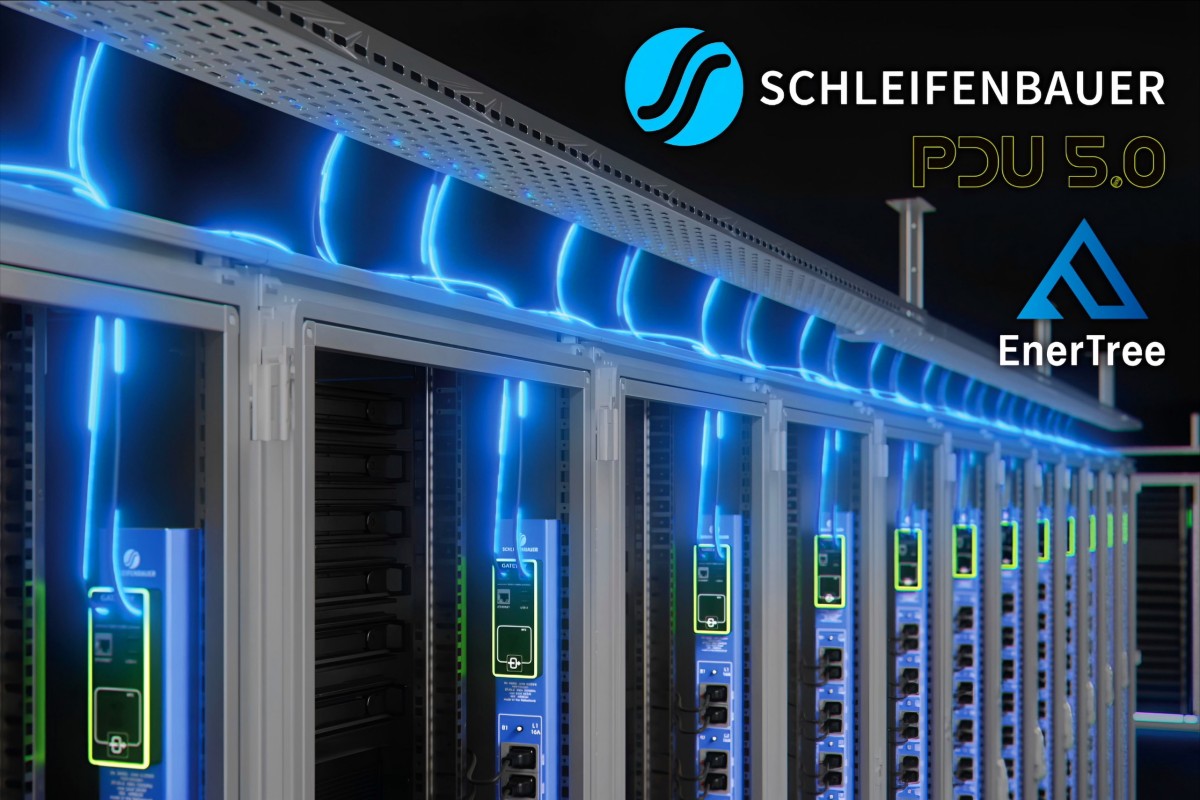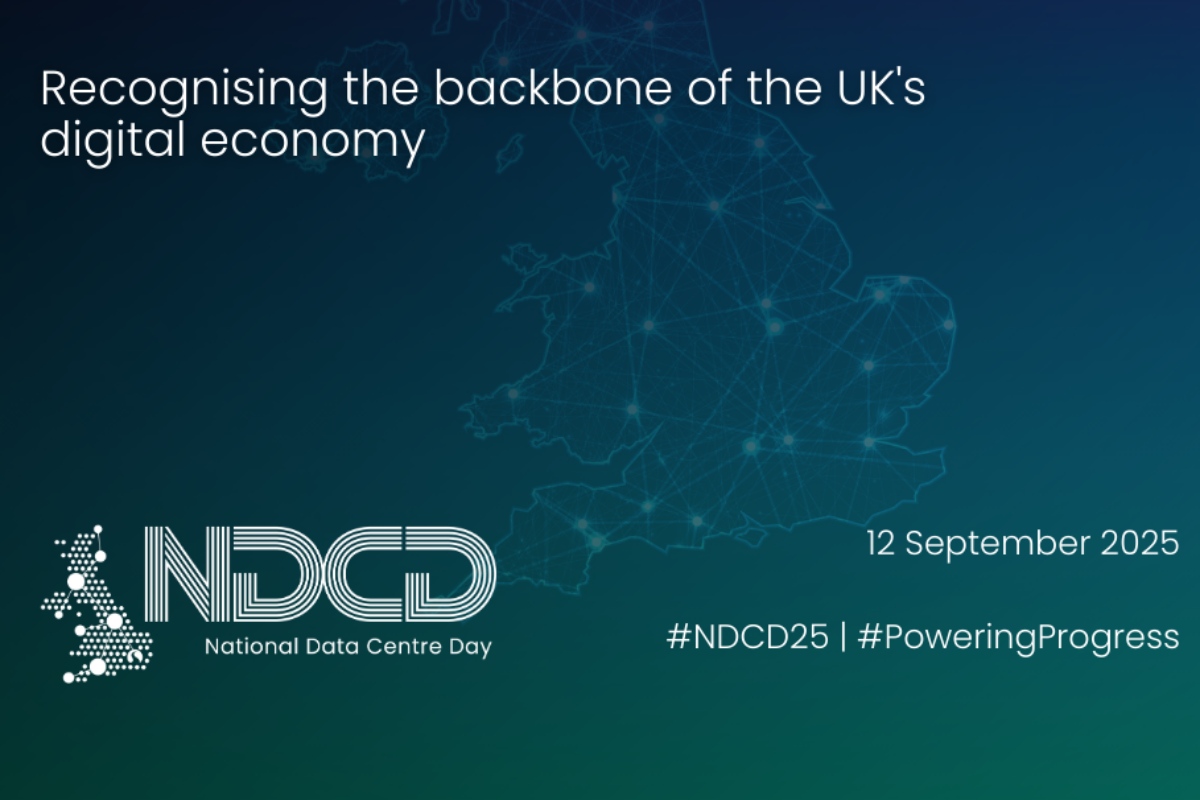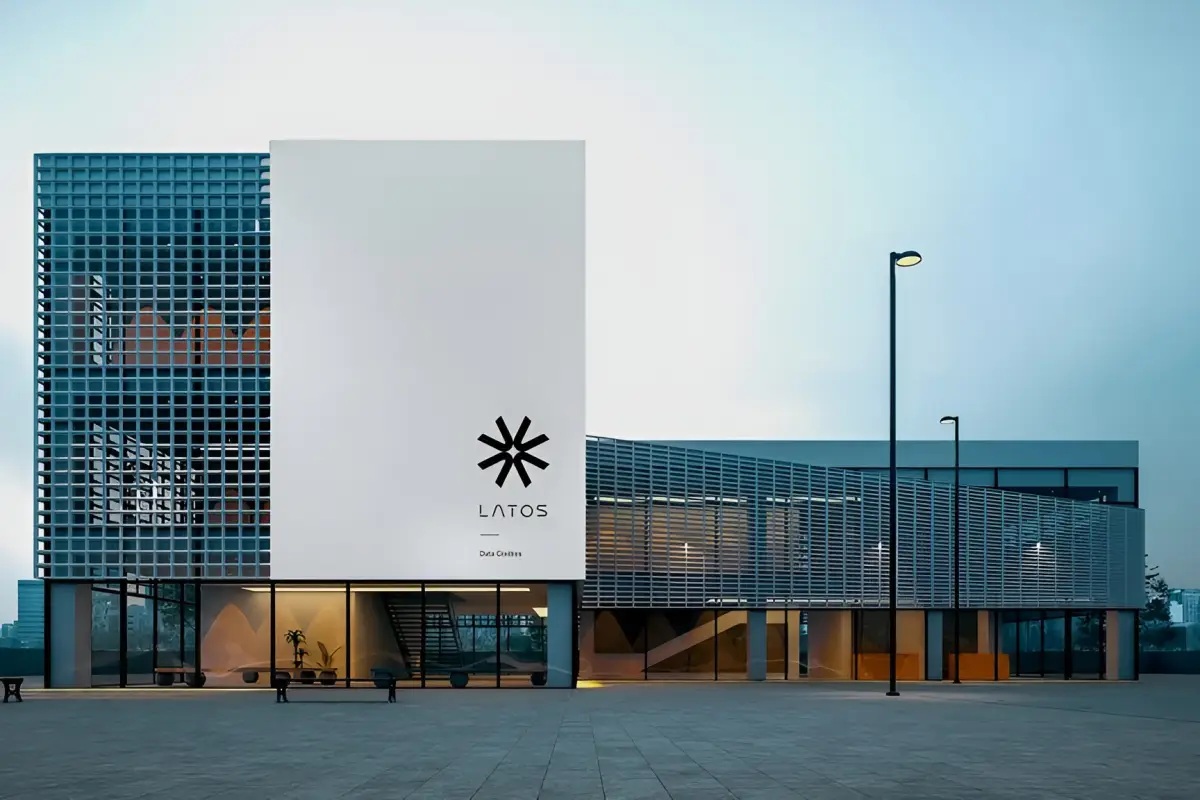Data Centres
Cabling Solutions for Optimised Data Centre Performance
Data Centre Infrastructure News & Trends
Data Centres
Products
Scolmore introduces IEC Lock C21 Locking Connector
Scolmore, a UK-based manufacturer of electrical wiring accessories, circuit protection products, and lighting equipment, has expanded its IEC Lock range with the addition of a new C21 locking connector, compatible with both C20 and C22 inlets.Featuring a side button release, the IEC Lock C21’s design aims to offer extra protection against accidental disconnection, making it an appropriate choice for applications where reliability is essential.Designed to handle the heat, the company says the C21 is a durable, lockable connector built to protect appliances that are sensitive to vibration against power loss.
The product is particularly suited to data centres, servers, and other industrial equipment where maintaining the proper device temperature is critical to operational success.
Joe Peck - 5 August 2025
Data Centre Build News & Insights
Data Centre Projects: Infrastructure Builds, Innovations & Updates
Data Centres
News
BSDI announces 5,000-acre campus in Montana
Big Sky Digital Infrastructure (BSDI), a Quantica Infrastructure (Quantica) company, has just announced a major project: a 5,000-acre energy and digital infrastructure campus outside Billings, Montana, USA.
The initial projected capacity is 500 MW of renewable power and battery energy storage, expandable to 1 GW. The company plans construction of the Big Sky Campus beginning in 2026.
“Montana has always been a state that builds its future on the strength of its people and natural resources,” says Damon Obie, a Montana native and co-founder of Big Sky Digital Infrastructure.
“The Big Sky Campus represents a unique opportunity to build on the industries that powered our history with the digital economy that will define our future.
"This project is about creating opportunities for Montanans, so our communities can thrive in the digital age while staying true to our values and heritage.”
John Chesser, co-founder of Big Sky Digital Infrastructure, adds, “A well-planned digital economy can support communities through employment opportunities and infrastructure investments.
“This project uses the rising demand for hyperscale, AI, and cloud computing to deliver land, renewable energy, and high-speed fibre in one integrated solution.”
“Having worked in the Montana power industry for over twenty years,” comments Charlie Baker, BSDI’s Chief Financial Officer, “I look forward to bringing BSDI’s approach of combining traditional grid power with planned renewable and battery energy storage to help customers meet sustainability and reliability goals.
"Improvements to in-state telecommunications that come with this will benefit the whole community including schools, healthcare, and community services.”
The site is expected to be connected to hundreds of miles of new fibre-ready underground conduit, enabling diverse routes to major metropolitan areas and aiming to ensure fast, resilient connectivity.
The site will also include large-scale renewable energy and battery energy storage to support the campus.
Through this project, the BSDI team expects to create construction jobs and permanent positions, boosting local economic development and workforce training.
Joe Peck - 4 August 2025
Data Centre Build News & Insights
Data Centre Projects: Infrastructure Builds, Innovations & Updates
Data Centres
News
Sabey announces Austin Building B
Sabey Data Centers, a data centre developer, owner, and operator, has announced that construction is under way for Building B on its growing Austin campus, located in the burgeoning tech corridor of Round Rock, Texas.
This three-storey facility is designed to deliver a total of 54 megawatts of power capacity, with the first 18 megawatts expected to be ready for service in Q3 2027.
Sabey says Austin B continues its commitment to building "scalable, energy-efficient digital infrastructure tailored for enterprise and hyperscale needs."
The facility is liquid-cooling-ready by design, building on Austin Building A, where 86% of current deployments are liquid-cooled.
This next phase of development hopes to ensure that Sabey is well-positioned to support the rising demand for high-density compute environments such as AI, HPC, and advanced research workloads.
“As we continue to expand our national footprint, launching construction on Austin B represents an important milestone in serving one of the country’s fastest-growing technology markets,” comments Tim Mirick, President of Sabey Data Centers.
“The Round Rock facility is purpose-built for flexibility and efficiency, and it offers an ideal home for forward-thinking customers with evolving density needs.”
Preleasing is now open, with the building being engineered to accommodate a range of cooling strategies and power densities, including hybrid and liquid-cooled deployments exceeding 200 kilowatts per rack.
Sabey Data Centers is a joint venture between Sabey Corporation and National Real Estate Advisors, acting as the investment manager on behalf of its institutional clients.
For more from Sabey, click here.
Joe Peck - 31 July 2025
Data Centre Infrastructure News & Trends
Data Centres
Innovations in Data Center Power and Cooling Solutions
News
Mayflex signs distribution agreement with Schleifenbauer
Mayflex, a UK-based distributor of converged IP infrastructure, networking, and electronic security products, has announced a new distribution agreement with Schleifenbauer, adding the Netherlands-based manufacturer’s power distribution units (PDUs) and energy management tools to the Elevate brand’s data centre infrastructure portfolio.
The partnership aims to support Mayflex’s ongoing focus on high-performance computing (HPC) and data centre (DC) environments, with a particular emphasis on providing equipment that is efficient, scalable, and compliant with European standards.
Schleifenbauer, which designs and manufactures its products in the Netherlands, will supply intelligent PDUs and related energy management software for integration into the Elevate range.
The collaboration hopes to enhance delivery times and flexibility, particularly for UK and Ireland customers.
Product and operational features
The partnership will see the inclusion of several features designed to improve operational performance and ease of use across data centre projects:
• European manufacturing — All Schleifenbauer equipment is produced in the Netherlands, allowing for consistent quality control, shorter lead times, and full EU regulatory compliance.
• Customisable production — The company offers a flexible manufacturing model with no minimum order requirements. This allows Mayflex customers to request individual units for trial projects, or bulk orders for larger-scale deployment, while maintaining consistent performance standards.
• Energy monitoring software — Schleifenbauer’s energy management platform is available at no extra cost. The software enables real-time monitoring and optimisation of energy usage across installations.
• Hot-swappable modules — PDUs include hot-swappable control components, enabling updates or maintenance without downtime.
• Short lead times — Schleifenbauer’s production model supports faster turnaround and delivery times, which Mayflex aims to leverage across the Elevate product range.
Comments from the companies
Simon Jacobs, Product Manager at Mayflex, says, “We’re excited to welcome Schleifenbauer as a technology partner to our Elevate brand. Their intelligent power solutions are a perfect fit for our growing data centre portfolio.
"The combination of European manufacturing, rapid lead times, and advanced features - like hot-swappable modules and free energy management software - makes this a compelling proposition for our customers.”
Stuart Edmonds, UK and Ireland Sales Manager at Schleifenbauer, adds, “Partnering with Mayflex is a strategic move that allows us to expand our reach in the UK and Ireland.
"Mayflex’s reputation for technical excellence and customer service aligns perfectly with our values. Together, we’re well-positioned to support the evolving needs of the HPC and data centre markets.”
Joe Peck - 31 July 2025
Data Centre Business News and Industry Trends
Data Centres
News
EUDCA announces Board of Directors for 2025/27
Further to member voting during its annual general meeting (AGM) held on 11 June 2025, the European Data Centre Association (EUDCA), the representative body of the European data centre community, has announced its Board of Directors to steer it up to 2027.
Board members met subsequently to appoint key positions and renew the mandates of existing committees and their leadership.
A new Board to serve the EUDCA for 2025/27
Technical expertise, extensive experience, and commercial acumen is abundant across the Board, with knowledge spanning the entire data centre lifecycle, from investment and design to sustainability/ESG and operations.
The EUDCA says that the "combined expertise of the Board is instrumental for the Association to advocate and serve its members." The Board now comprises of the following:
• Lex Coors, Digital Realty — President of EUDCA & Policy Committee Chair• Laurens van Reijen, LCL Data Centres — Treasurer• Bruce Owen, Equinix — Vice President• Marie Chabanon, Data4 — Vice President, EUDCA & Technical Committee Chair• Isabelle Kemlin, Swedish Datacenter Industry Association — Vice President• Dick Theunissen, EdgeConneX — Vice President, EUDCA & NTA representative• Matt Pullen, CyrusOne — Board Member, EUDCA & CNDCP Chair• Adam Eaton, Global Switch — Board Member• Andrew Harrison, Arup — Board Member• Matthew Baynes, Schneider Electric — Board Member, EUDCA & NTA representative• Antoine Lesserteur, France Datacenter — Board Member• Stijn Grove, Dutch Data Center Association — Board Member, EUDCA & NTA representative• Michael Winterson, EUDCA — Secretary General
Leading the EUDCA
Lex Coors, Chief Data Center Technology and Engineering Officer at Digital Realty, unanimously retained his position as elected President to guide board and association operations.
Michael Winterson continues as Secretary General, with Laurens van Reijen of LCL Data Centers as Treasurer.
The EUDCA board also appointed four new Vice Presidents: Bruce Owen, Equinix; Marie Chabanon, Data4; Isabelle Kemlin, Swedish Datacenter Industry Association; and Dick Theunissen, EdgeConneX.
As a founding member of the Climate Neutral Data Center Pact (CNDCP), the EUDCA maintains a permanent Board seat at the Pact. As such, the EUDCA says it is happy to re-appoint Board Member Matt Pullen as the representative to the Pact where he will maintain his Chair position.
Michael Winterson, Secretary General, EUDCA, comments, “As Europe moves to deliver its goals for a booming digital economy and strong AI sector, its dependence upon digital infrastructure has never been more critical.
"The EUDCA continues to serve as the independent voice for Europe’s data centre community, connecting with policy makers to add nuance to the legislative process for regulations that advance digital growth.
“The EUDCA remains a trusted and authoritative voice for the data centre industry. In a world of changing sentiments, we maintain a focus on the efficiency and sustainability of data centre services through our close association with the CNDCP.
"As a board, we remain committed to being at the forefront of shaping policy within Europe, protecting the interests of our constituents whilst looking after the planet.”
EUDCA committees bolster leadership
Having renewed the mandates of existing committees with some restructuring, the Policy Committee sees Lex Coors reappointed as Chair and Eve Fensome (Stack Infrastructure) as Deputy Chair.
The Technical Committee will be led by Marie Chabanon as Chair and Chad McCarthy (nLighten) as Deputy Chair.
National trade associations work with the EUDCA
From the national trade associations, the three existing representatives - Stijn Grove, Dutch Data Center Association; Antoine Lesserteur, France Datacenter; and Isabelle Kemlin, Swedish Datacenter Industry Association - were confirmed as part of the board.
For more from the EUDCA, click here.
Joe Peck - 30 July 2025
Data Centres
Events
News
DCNN supports new National Data Centre Day initiative
DCNN is proud to support the launch of National Data Centre Day, a new annual awareness initiative recognising the critical role that data centres play in powering the UK’s digital economy, public services, and AI-driven future.
Taking place each year on 12 September, the day is set to commemorate the moment in 2021 when data centres were formally recognised by the UK Government as Critical National Infrastructure (CNI).
This classification reflects their essential role in maintaining the digital systems and services that modern society relies on, from banking and healthcare to smart cities and generative AI.
National Data Centre Day aims to celebrate the innovation, sustainability, and skilled people behind the industry, while encouraging greater awareness and engagement across the UK.
As one of several industry supporters backing the campaign, DCNN encourages its readers, partners, and the wider community to learn more and get involved.
Visit the website to find out how to take part.
Joe Peck - 29 July 2025
Data Centre DCIM Solutions & Best Practices
Data Centre Infrastructure News & Trends
Data Centres
News
Mitsubishi partners with Modius
Japanese multinational engineering company Mitsubishi Heavy Industries (MHI) has signed an agreement with US-based Modius to integrate its OpenData data centre infrastructure management (DCIM) platform with MHI’s power, cooling, and control technologies.
The collaboration will focus on delivering a comprehensive offering for data centre energy management (DCEM) on a global scale.
Modius’s OpenData DCIM software provides real-time visibility into critical infrastructure, supporting improved capacity planning, energy efficiency, and uptime.
The platform has been deployed in over 250 sites worldwide and includes AI/ML-based analytics to support proactive maintenance and operational optimisation.
The integration of Modius’s platform into MHI’s data centre portfolio seeks to enhance the company’s ability to offer customers real-time diagnostics, predictive insights, and greater control over facility performance.
The OpenData AI/ML module is designed to recognise normal operational patterns and flag anomalies early, allowing data centre operators to "respond before issues escalate."
“With the addition of the Modius DCIM platform to our digital portfolio, we can offer enhanced services to both existing and new customers seeking visibility and operational optimisation in next-generation data centres,” claims Shin Gomi, Senior General Manager, DCEM at MHI.
“MHI remains committed to supporting sustainable and energy-efficient infrastructure.”
Craig Compiano, President at Modius, adds, “MHI’s global presence and its alignment with our mission to drive efficiency, improve sustainability, and optimise performance in data centres make this collaboration a strong match. We look forward to working together to support facilities worldwide.”
Joe Peck - 29 July 2025
Data Centre Business News and Industry Trends
Data Centres
Insights into Data Centre Investment & Market Growth
News
Ex-Google Lauri Ikonen joins Polarnode
Polarnode, a Finnish data centre developer that focuses on environmentally sustainable data centre construction and operation, has announced the appointment of Lauri Ikonen as its new Head of Technology, effective from 1 September.
The appointment comes as the company accelerates its growth strategy to aim to become a leading data centre platform across the Nordic region.
Ikonen joins Polarnode at a time of increasing demand for data centre capacity across the Nordics. He brings more than two decades of experience in large-scale infrastructure, with a particular focus on mission-critical operations, backup power, and cooling technologies.
From 2016 to 2023, Ikonen held a series of senior roles at Google’s data centre organisation, including Site Lead and Site Operations Manager at the company’s Hamina campus in Finland. During this period, the site expanded significantly, and daily operations grew to support approximately 400 personnel.
More recently, he served as Chief Strategy and Operating Officer at UpCloud, where he was responsible for strategic management, operational oversight, and service reliability across 13 global data centre locations.
His earlier career includes leadership roles in ABB’s Power Division, where he worked on industrial-scale infrastructure and service management.
“We are thrilled to welcome Lauri to the team,” says Mikko Toivanen, Chair of the Board at Polarnode.
“His deep experience in managing and scaling hyperscale data centre infrastructure will be instrumental as we accelerate our development strategy and respond to the growing market need for high-performance, sustainable, and resilient data centre capacity.”
In his new role, Ikonen will lead Polarnode’s technology strategy and oversee the design and implementation of upcoming sites. He will also guide the company’s entry into colocation services, supporting its long-term ambition to deliver clean, high-performance infrastructure to support the growing digital economy.
“The Nordic region is rapidly becoming a global hub for digital infrastructure,” comments Lauri. “Polarnode is well positioned to lead that transformation with its forward-thinking approach. I’m excited to contribute to its next phase of growth.”
Polarnode is 100% Finnish-owned and has so far announced major data centre developments in Lappeenranta, Nokia, and Pori.
Joe Peck - 29 July 2025
Data Centre Build News & Insights
Data Centre Projects: Infrastructure Builds, Innovations & Updates
Data Centres
News
Aligned announces new mega-scale AI campus in Ohio
Aligned Data Centers, a technology infrastructure company, has announced a significant expansion in Central Ohio with the planned development of its new data centre campus inside the Conesville Industrial Park.
Aligned will develop a 197-acre parcel adjacent to the former AEP Conesville Power Plant. This development aims to revitalise the legacy brownfield site and spur commercial development, converting it into an economic epicentre for Coshocton County and the state of Ohio.
"Through this strategic expansion, Aligned not only reinforces its commitment to providing future-ready digital infrastructure in vital growth markets, but also directly catalyses billions of dollars in investment for the state of Ohio and the Coshocton County community,” claims Andrew Schaap, Aligned’s CEO.
"We are proud to see this investment revitalise a critical legacy site. It lays a powerful foundation, drawing new industries, creating high-quality jobs, and unlocking significant future opportunities for Southeast Ohio."
Representing a multi-billion-dollar investment, this phased development is anticipated to generate thousands of construction jobs and hundreds of high-quality, long-term operational roles, ultimately boosting the local economy.
Data centres in Ohio reportedly contribute significantly to local economies, generating substantial tax revenues that support public services and local infrastructure improvements.
Aligned says it is also committed to local community engagement, including partnerships that support educational programs and environmental initiatives, intending to "ensure a positive and lasting impact in Coshocton County and the surrounding areas."
Aligned’s new multi-building campus has already secured a foundational customer for its first data centre, targeting initial capacity delivery mid-2026.
This is Aligned’s third data centre campus in Ohio.
For more from Aligned, click here.
Joe Peck - 25 July 2025
Commercial Real Estate: Property Developments, Trends & Infrastructure
Data Centre Business News and Industry Trends
Data Centres
News
Ryze develops brand for data centre newcomer, Latos
UK creative agency Ryze has delivered a full brand identity for Latos, a fast-growing data centre developer building a UK-wide network of AI-ready facilities to support the country’s digital infrastructure.
From strategic positioning through to messaging, identity, and digital design, Ryze has developed the Latos brand from the ground up.
With a focus on fast-scaling technology and SaaS firms, the agency says it aimed to deliver a brand that communicates Latos’ ambition to build smarter, more sustainable infrastructure without the use of technical jargon.
The project arrives at a time of rising demand for UK data centres, driven by increased AI adoption and government infrastructure investment. Chipmaker NVIDIA recently identified the UK as a “critical node” in its global expansion strategy.
David Smith, Founder of Ryze, comments, “The Latos brand evokes ambition, energy, and a sense of clarity.
"Visually, we avoided the conventional clichés of the sector and instead built a brand that moves – a timeless, modern foundation with a dynamic, confident colour palette and a distinctive icon set that adapts to different platforms and partners.
"It’s a future-facing brand for a future-building company.”
Peter Wilcock, Board Member at Latos, adds, “We’re not interested in doing what everyone else does. The market’s already full of that.
"Our vision is about scale and creating smarter, more agile builds that fit the needs of today’s digital infrastructure.
"Having a brand that reflects that disruption isn’t just useful, it’s essential. It’s how we connect with the right partners and show the market who we are.”
Latos is currently developing 11 UK sites, with plans to establish 40 facilities by 2030. The company’s standardised designs are intended to enable faster rollout and regional deployment, with all sites built for high-performance computing and real-time AI.
“This wasn’t just about giving Latos a logo but about shaping a brand that could open doors, attract capital, and be bold in a sector where most look and sound the same,” David concludes.
“That thinking runs through all of our work, whether it’s for a SaaS platform or data centre developer, because strong branding isn't defined by sector or subject matter, but by ethos and purpose.”
Joe Peck - 24 July 2025

Head office & Accounts:
Suite 14, 6-8 Revenge Road, Lordswood
Kent ME5 8UD
T: +44 (0)1634 673163
F: +44 (0)1634 673173









